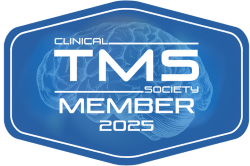
IV ketamine and SPRAVATO® are two therapeutic modalities in current use for the treatment of depression and other mental health diagnoses. The two have differences in the medications themselves, what they’re used for, and how clinicians deliver treatment with IV ketamine and SPRAVATO®.
IV Ketamine and SPRAVATO® for Mental Health Treatment
In March 2019, the Food and Drug Administration (FDA) approved the use of a medication called SPRAVATO® for people diagnosed with treatment-resistant depression or major depressive disorder accompanied by suicidal ideation. Since then, patients and clinicians have also reported the benefits of SPRAVATO® for the treatment of typical major depressive disorder (MDD), post-traumatic stress disorder (PTSD), anxiety disorders, and other mental health diagnoses.
Approval of SPRAVATO® was an important step forward for depression treatment. It was particularly important for people diagnosed with a variation of depression called treatment-resistant depression, or TRD. People diagnosed with TRD have depression that does not respond well to traditional treatments such as antidepressants and/or psychotherapy.
In clinical terms, a person diagnosed with MDD who attempts at least two courses of treatment with antidepressants for at least three months each – with no improvement – meets the criteria for treatment-resistant depression (TRD).
Approval of SPRAVATO® gave people with TRD hope that they could find symptom relief, when traditional treatments proved ineffective.
However, the molecule responsible for the therapeutic effect of SPRAVATO®, esketamine, is similar to another molecule that has been in use for decades in various medical situations: ketamine.
Ketamine and Esketamine: What Are They?
Ketamine was initially developed in the 1960s as an anesthetic and analgesic and received FDA approval as an anesthetic/analgesic medication in 1970.
Now, in the 2020s, ketamine – as a medication for mental health purposes – is used in two forms:
- Racemic ketamine, which is used in IV infusions
- Esketamine, a derivative of ketamine, is used in SPRAVATO® nasal spray
When used for anesthesia, ketamine doses are higher. When used for mental health treatment purposes, a sub-anesthetic dose, or lower dose, is utilized. Regardless of usage and dosage, it’s the same drug.
Currently, SPRAVATO® is FDA-approved for the treatment of TRD or major depressive disorder (MMD) with suicidal ideation. Racemic ketamine, in the form of IV infusions, is now in widespread use as an off-label treatment for treatment-resistant depression (TRD), major depressive disorder (MDD), bipolar depression, anxiety disorders, post-traumatic stress disorder (PTSD), and other mental health conditions.
Those are the basic similarities between IV ketamine and esketamine (SPRAVATO®): they’re derived from the same molecule and used to treat similar mental health diagnoses and they offer symptom relief more quickly than typical mental health medications.
Now let’s take a look at the differences – aside from the fact that they’re slightly different molecules, and their FDA status is slightly different.
IV Ketamine and SPRAVATO®: Similar Medication, Different Delivery Methods
The primary difference – after those noted above – between IV ketamine and SPRAVATO® is the method of delivery.
First, we should point out that IV means intravenous. In this context, the medication – racemic ketamine – is delivered in an IV drip, called an infusion. It’s like what most people are familiar with seeing in a hospital or other medical context. An IV can deliver medication, replace lost fluids, and perform other essential medical purposes. During an IV ketamine infusion, the IV is used to deliver medication.
In most cases, treatment with IV ketamine begins after an initial consultation with and assessment administered by a licensed and qualified mental health provider. If the assessment indicates treatment with IV ketamine is appropriate, patients begin treatment as soon as they complete intake details with their provider and can schedule an appointment. Treatment with IV ketamine typically occurs in an outpatient office setting.
Here’s how a typical treatment session works.
IV Ketamine: Standard Delivery Procedure
- Patient and provider – most often a nurse practitioner – spend about 15 minutes getting settled in. Patients sit in a comfortable chair.
- Once the clinician sets and initiates the IV, the infusion lasts around 45 minutes.
- Once the infusion is complete, the patient remains under the observation of a clinician for at least 30 minutes.
- The treatment session, including set up and observation time, lasts about 1 ½ hours.
One side effect of treatment with IV ketamine may be drowsiness. Therefore, patients need to arrange transportation to and from each treatment session, rather than driving themselves.
In most cases, treatment with IV ketamine follows a schedule like this:
IV Ketamine: Standard Course of Treatment
- Six (6) ketamine infusions over 2-3 weeks
- Booster infusions may be necessary, as determined by patient response to treatment
- Booster treatments occur at a frequency determined by the patient and clinician. Some patients do not need boosters, while others receive boosters once a month, once over six months, or at a different schedule, based on unique patient needs. The most a booster is offered is once a month.
SPRAVATO® Treatment Sessions: Basic Overview
In most cases, treatment with SPRAVATO® begins like treatment with IV ketamine. It starts with a consultation and evaluation performed by a licensed medical professional to determine whether SPRAVATO® is an appropriate treatment. Once an evaluation, assessment, and patient intake – however that works for the specific provider – are complete, treatment with SPRAVATO® most often occurs in an outpatient office setting as soon as a patient can schedule an appointment.
Here’s how a typical session works.
SPRAVATO®: Standard Delivery Procedure
- The patient and provider spend about 15 minutes getting ready for the treatment session.
- Patients administer SPRAVATO® themselves. The medication is delivered in a spray bottle, like a nasal spray for allergies.
- Because of the SPRAVATO® experience, patients remain under the observation of a clinician for around two hours after self-administration.
- Most sessions last around 2 ½ hours.
The side effects of SPRAVATO® can include dizziness, drowsiness, and, in some cases, sedation. Therefore, patients do not drive themselves to and from treatment, but instead arrange for a friend or family member to drive them to treatment sessions.
In most cases, treatment with SPRAVATO® follows a schedule like this:
SPRAVATO®: Standard Course of Treatment
- Phase One:
- Patients receive SPRAVATO® twice a week for about a month
- Phase Two:
- Patients receive SPRAVATO® once a week for another month
- Phase Three:
- Frequency of dosing can remain at once a week or potentially every other week depending on response to treatment.
Treatment With IV Ketamine and Esketamine (SPRAVATO®): A Quick Summary
IV ketamine and SPRAVATO® similarities:
- Both medications are derived from the molecule ketamine:
- IV ketamine is racemic ketamine
- SPRAVATO® is esketamine
- Both medications:
- Relieve symptoms more quickly than standard antidepressants
IV ketamine and SPRAVATO® differences:
- The molecule:
- IV ketamine is racemic ketamine
- SPRAVATO® is esketamine
- Delivery:
- Patients self-administer SPRAVATO® under the observation of a qualified clinician
- IV ketamine is administered by qualified clinical personnel via intravenous infusion
- SPRAVATO® treatment sessions last about 2 ½ hours
- IV ketamine treatment session last about 1 ½ hours
- Symptom relief:
- IV ketamine is a good option for those needing symptom relief quickly. Responders to treatment oftentimes note an improvement in depressive symptoms as soon as after the first infusion. With SPRAVATO®, it might take a few weeks to see the improvements.
These two medications are part of a new generation of treatment for mental health diagnoses that don’t respond well to traditional care with standard psychiatric medication and psychotherapy. For patients with treatment-resistant depression, this type of treatment can make all the difference: they may experience symptom relief for the first time in years with SPRAVATO®. For patients with severe depression, choosing treatment with IV ketamine can offer significant symptom relief faster than with most standard treatments.

